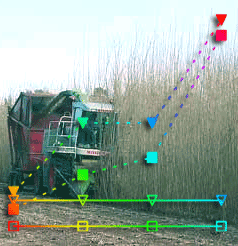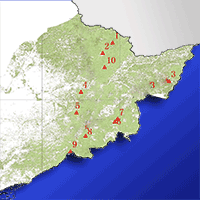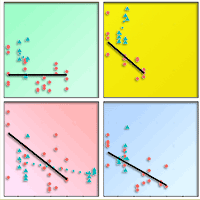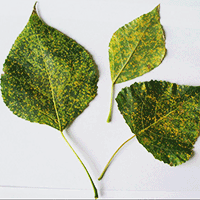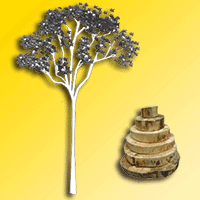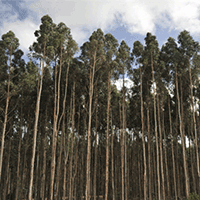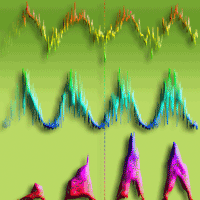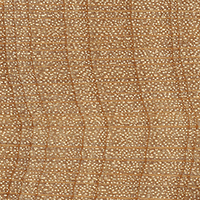
Field performance of poplar for bioenergy in southern Europe after two coppicing rotations: effects of clone and planting density
G Di Matteo (1) , G Sperandio (2), S Verani (1)
iForest - Biogeosciences and Forestry, Volume 5, Issue 5, Pages 224-229 (2012)
doi: https://doi.org/10.3832/ifor0628-005
Published: Oct 02, 2012 - Copyright © 2012 SISEF
Research Articles
Abstract
Short Rotation Forestry (SRF) plantations are estimated around 7 000 hectares in Italy, mostly established in northern regions. Recently thousands hectares of SRF were established in central and southern regions of Italy also (especially in Latium and Molise) due to the promising introduction of new clones resistant to summer water limiting and pest attacks. A poplar SRF plantation was established in central Italy in order to investigate the influence of site conditions and planting densities/spacings on the growth and yield production of three hybrid poplar clones (AF2, AF6 and Monviso). Cuttings of each clone were planted at two different densities/spacings and planting design as: (a) low density = 7 140 cuttings ha-1 in a single-row design (SR); (b) high density= 10 360 cuttings ha-1 in a twin-rows design (TR). Growth (both diameter and height) and yield were evaluated after biennial (2006-2007) and triennial (2008-2010) rotation. Relationships between fresh weight and diameter were determined to calculate the yield of each clone expressed in MgDM ha-1 years-1. At the end of the triennial rotation (2010) all poplar clones showed very high stump survival rates with higher values in SR (89.9%) compared to TR (85.6%). AF2 clone can be advisable thanks to the higher yield production than both AF6 and Monviso. Considering planting densities/spacings, SR seems to be more advisable than TR in order to obtain a good biomass production and a low planting costs. Considering the coppicing cycles, triennial rotation allows higher annual yield production (average value of 13.0 MgDM ha-1) than biennial rotation (average: 10.1 MgDM ha-1).
Keywords
Short Rotation Forestry, Hybrid Populus Clones, Coppicing Cycles, Yield, Growth, Optimal Density
Authors’ Info
Authors’ address
S Verani
Consiglio per la Ricerca e la Sperimentazione in Agricoltura, Unità di ricerca per le Produzioni Legnose fuori Foresta (CRA-PLF), v. Valle della Quistione 27, I-00166 Rome (Italy)
Consiglio per la Ricerca e la Sperimentazione in Agricoltura, Unità di ricerca per l’Ingegneria Agraria (CRA-ING), v. della Pascolare 16, I-00015 Monterotondo, RM (Italy)
Corresponding author
Paper Info
Citation
Di Matteo G, Sperandio G, Verani S (2012). Field performance of poplar for bioenergy in southern Europe after two coppicing rotations: effects of clone and planting density. iForest 5: 224-229. - doi: 10.3832/ifor0628-005
Academic Editor
Renzo Motta
Paper history
Received: Jan 24, 2012
Accepted: Aug 20, 2012
First online: Oct 02, 2012
Publication Date: Oct 30, 2012
Publication Time: 1.43 months
Copyright Information
© SISEF - The Italian Society of Silviculture and Forest Ecology 2012
Open Access
This article is distributed under the terms of the Creative Commons Attribution-Non Commercial 4.0 International (https://creativecommons.org/licenses/by-nc/4.0/), which permits unrestricted use, distribution, and reproduction in any medium, provided you give appropriate credit to the original author(s) and the source, provide a link to the Creative Commons license, and indicate if changes were made.
Web Metrics
Breakdown by View Type
Article Usage
Total Article Views: 58899
(from publication date up to now)
Breakdown by View Type
HTML Page Views: 48825
Abstract Page Views: 3589
PDF Downloads: 4905
Citation/Reference Downloads: 29
XML Downloads: 1551
Web Metrics
Days since publication: 4822
Overall contacts: 58899
Avg. contacts per week: 85.50
Citation Metrics
Article Citations
Article citations are based on data periodically collected from the Clarivate Web of Science web site
(last update: Mar 2025)
Total number of cites (since 2012): 35
Average cites per year: 2.50
Publication Metrics
by Dimensions ©
Articles citing this article
List of the papers citing this article based on CrossRef Cited-by.
References
Studies of poplars and willows short rotation coppice establishment. In: 23rd Session of International Poplar Commission “Poplar, Willow and People’s Wellbeing”. Beijing (China) 27-30 October 2008. Abstract of submitted papers, pp. 15.
Gscholar
Forest plantations and farm forestry in Italy: directions for cultivations and valorisations. In: Proceedings of the 3 “Silvicultural National Congress”. Taormina (ME - Italy) 16-19 October 2008, pp. 729-736. [in Italian]
Gscholar
Influence of the cultural practices before planting on growth and phytosanitary status of poplar. Informatore Agrario 22: 51-57. [in Italian]
Gscholar
Growth dynamics and biomass production of 12 poplar and 2 willow clones in a short rotation coppice in northern Italy. In: Proceedings of the “15th European Biomass Conference and Exhibition”. Berlin (Germany) 7-11 May 2007, pp. 749-755.
Gscholar
Preliminary research on short rotation cycle poplar clones for bioenergy production. In: Proceedings of the International Conference “RIO 9: World Climate and Energy Event” (Krauter S, Baranowsky F, Blandon NR, Kempf E eds). Rio de Janeiro (Brazil) 17-19 March 2009, pp. 127-132.
Gscholar
Phytosanitary concerns in the biomass poplar plantation of the COFEA Project (Monterotondo - Rome). In: IPC WP6 Working party, Workshop meeting “Environmental applications of poplar and willow”. Montelibretti (RM - Italy) 17-18 September 2010 (p
Gscholar
New varieties of poplar for biomass provide interesting productivity. Informatore Agrario 18: 49-53. [in Italian]
Gscholar
Indagini su cedui di pioppo a turno breve nella pianura ferrarese. Italia Forestale e Montana 5: 411-419.
Gscholar
Dichotomous key for the nursery recognition of the main poplar clones grown in the European Union. Volume II Clonal cards. CRA-PLF, Research Units for Intensive Wood Production, Casale Monferrato, Italy, pp. 352.
Gscholar
Biomass yield of poplar after five 2-year coppice rotations. Forestry 72 (2): 157-163.
Gscholar
Black locust (Robinia pseudoacacia L.) growing in Hungary. Forest Research Institute, Budapest, Hungary, pp. 50.
Gscholar
La produzione di biomassa da colture arboree: realtà italiana e prospettive. In “Nuove frontiere dell’arboricoltura italiana” (Silverio S ed). Gruppo Perdisa, Bologna, Italy, pp. 517-533.
Gscholar
Harvesting short rotation poplar plantation for biomass production. Croatian Journal of Forestry Engineering 29 (2): 129-139.
Gscholar
Pioppeto da biomassa a rotazione biennale. Caratteristiche e produttività dei cloni. Sherwood 148: 39-42.
Gscholar
Piantagioni dedicate da biomassa. Analisi GIS nella regione Lazio. Sherwood 157: 41-45.
Gscholar

